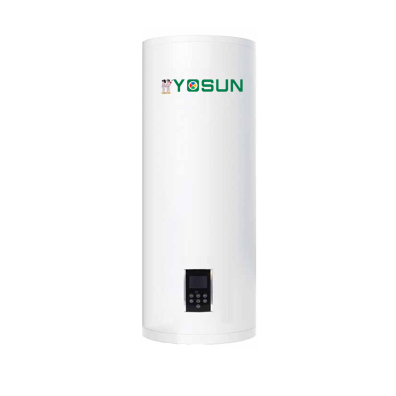Australia’s science agency CSIRO announced that its concentrated solar thermal research facility in Newcastle, New South Wales had a breakthrough as part of research investigating the potential of “falling ceramic particles” to capture and store solar energy as heat.
In detail, the solar technologies team led by Jin-Soo Kim recently achieved a critical milestone temperature of 803 °C for the first time at the falling particle receiver employing a new and novel concept. Solar Water Heaters

“This is significant because it creates the opportunity for greater renewable energy storage when combined with our patented heat exchanger,” Kim said. “This technology is key to delivering low-cost renewable energy at scale for the decarbonization of Australia’s heavy industry.”
At the heart of the new process is Concentrated Solar Thermal (CST). The concept involves using mirrors to concentrate sunlight, converting it to heat, which can then be stored or used to generate electricity. CST isn’t entirely new. The basic idea dates back to the 1800s when European inventors tinkered with sunlight concentration. In recent decades, several different concentrated solar thermal power technologies have evolved. They range from a parabolic dish circled by mirrors to tower systems filled with molten salt.
The game-changers today are ceramic particles, as fine as sand. Able to endure incredibly high temperatures, they’re ideal for storing significant amounts of heat.
These heated particles act like a battery, storing energy as heat, for up to 15 hours. As the particles cool, they release this energy. They could provide power whenever it’s needed, even at night and during periods of low solar and wind output.
Traditional CSTs are limited by the heat transfer fluids they use. Common fluids, like molten salt or high-temperature oil, can only handle up to 600°C and 400°C, respectively.
However, the ceramic particles the team is working with can endure temperatures over 1000°C. These particles not only absorb the sun’s heat but also store it, simplifying the system and reducing costs.
The ‘falling’ part of this method uses gravity to heat these tiny, dark-hued ceramic particles. Each particle is less than half a millimetre in size. The particles are dropped from a hopper at the top of the tower, and heated as they pass through focused solar energy. In a shortfall, their temperature can shoot from 500°C to 800°C, and with more advanced setups, possibly over 1000°C.
Unlike traditional methods that rely on steel tubes, the particles fall freely. This approach avoids the heat limitations of steel. Once heated, they’re stored in a silo. When needed, they’re used to produce steam for power generation or other industrial tasks.
While successful, developing the process was not without its own challenges. When particles fall too fast, they spread out. This lets sunlight through and reduces efficiency. The answer was a ‘catch and release’ method. After falling a short distance, particles land in a trough, slowing them before they are allowed to fall into the next trough.
“CST doesn’t compete with PV solar energy,” Dominic Saal said. “PV gives you power when the sun is shining, whereas CST takes energy from the sun, stores it and then allows the user to use that energy when the sun isn’t shining, such as overnight or on cloudy days.”
It’s a match made in heaven. CST with ceramic particles can offer a dependable and green power source. And it’s urgently needed, as 62 per cent of Australia’s coal-fired power stations are now expected to close before 2033.
CSIRO’s pilot system in Newcastle has 400 mirrors. However, a full-scale one might use over 10,000 larger mirrors. These can generate power similar to a 100 MW coal plant.
“The challenge isn’t so much collecting energy from the sun; it’s how to safely and efficiently convert that energy into heat and store it for later use,” researcher Wes Stein said. “The power generation from CST technology resembles a coal-fired power plant without the coal. It uses the same turbine. Typical coal-fired power plants use a steam turbine that operates at 540 degrees. Instead of using coal to create the heat to superheat the steam, we capture energy from the sun and store it for 10 to 15 hours.”
A global roundup reports 6460 megawatts of CST projects currently operational in 18 different countries, with another 3859 MW of projects under construction.
According to the scientists, Australia’s net-zero transition must include pathways for industrial decarbonization.
Saal said CSIRO’s new falling ceramic particle technology will expand the role that CST can play in this mix.
“Process heat is the thermal energy used in industrial processes. And it accounts for over 20% of Australia’s total energy use and emissions. There is now strong industry interest in how to abate thermal emissions,” he said.
ASTRI has a CST case study underway, with pet food manufacturer Mars. Mars has a pet food processing plant based in Albury-Wodonga that uses more than 140 terajoules of gas annually.
The company is evaluating the potential installation of a CST system to provide renewable steam for its pet food manufacturing processes. It has the potential to displace up to 50% of their gas usage.
“We need policies to encourage industry first-movers to establish local supply chains and expertise, thereby accelerating the energy transition,” Saal said. “We want Australian industry to optimize their access to our abundant, low-cost solar resources. It will drive productivity and improve their competitive standing in global and domestic markets. The CSIRO CST falling particle technology can provide renewable heat at the same high temperature that coal and gas deliver and over multiple hours.”

Solar Water Heaters Developments are coming thick and fast indeed. My favorites are: 1. Graphite from wood/ waste in Finland. 2. Mega lithium confirmation on Oregon/California border (US) that is easily accessible from surface clays mix. 4. The ceramic slow-falling solar powered hest storage “battery” in Australia. All good news.